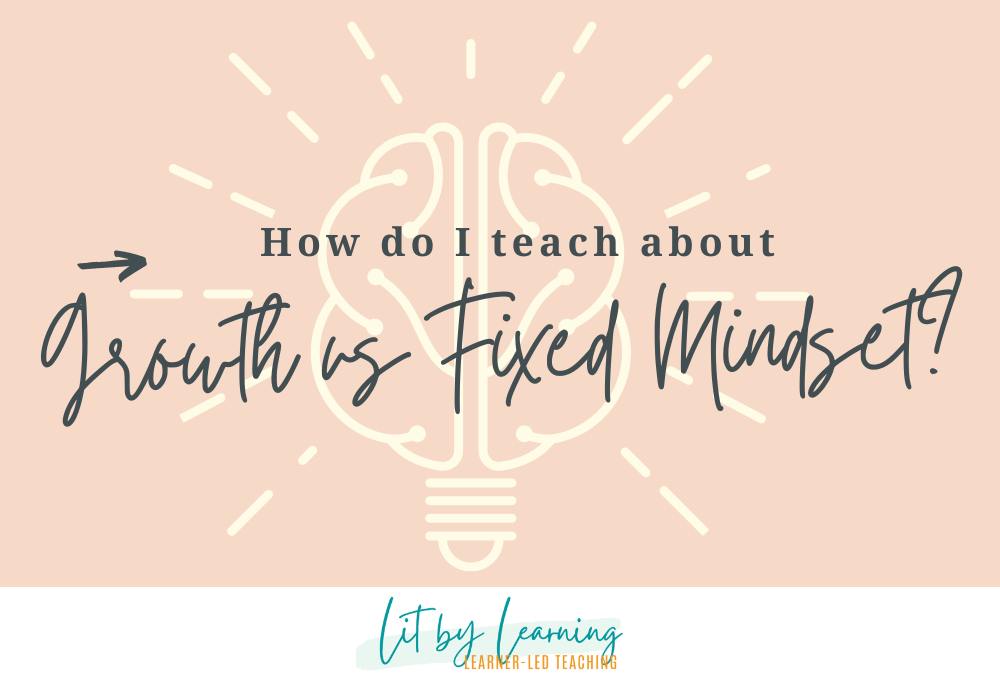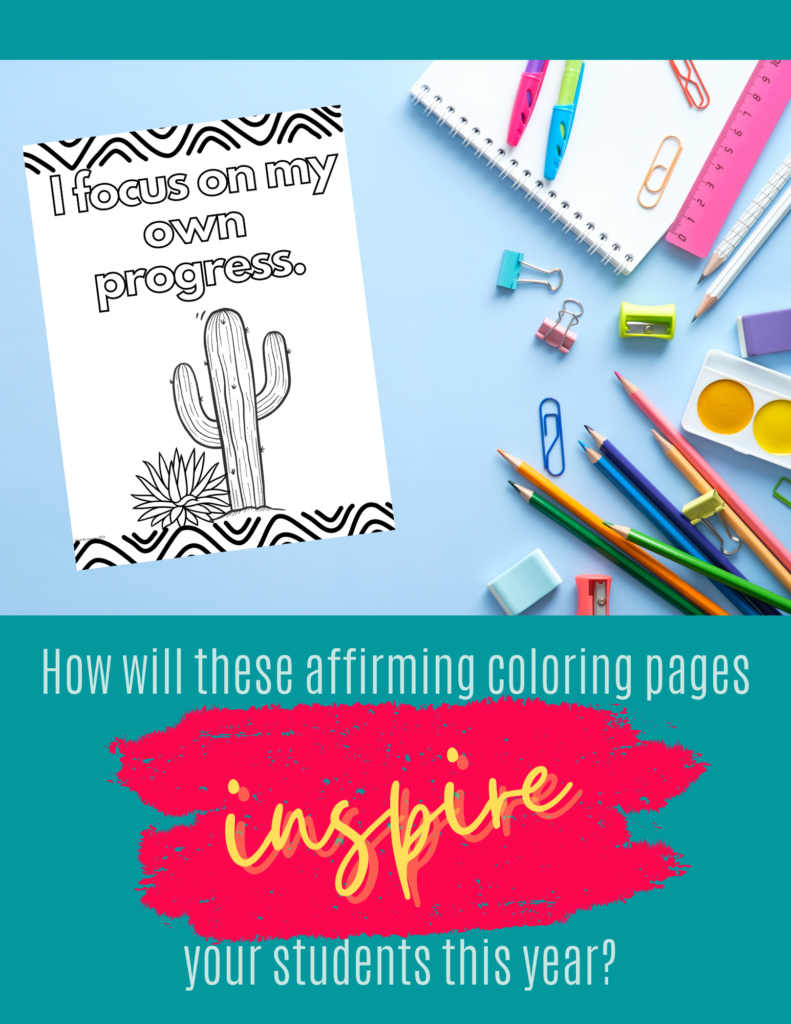Why is it integral to teach the difference between growth and fixed mindset? Because your students deserve to know just how strong, brilliant and powerful their brains are!
What is growth mindset?
An incredibly powerful concept for even early elementary students is understanding the difference between a growth mindset and a fixed mindset. As elementary teachers, we have the unique opportunity to lay the foundation for a positive and resilient mindset that will benefit our students throughout their lives. In this blog post, we will explore practical strategies to teach the difference between a growth mindset and a fixed mindset in the elementary classroom.

Teaching about Growth Mindset
Define a Growth Mindset vs Fixed Mindset
Start by introducing the concept of mindset and explaining that it refers to the way students think about their abilities and potential for growth. Break down the difference between a growth mindset, which embraces challenges, believes in effort and perseverance, and sees failures as opportunities for learning, and a fixed mindset, which avoids challenges, believes abilities are fixed, and sees failures as indicative of personal limitations.
Promote self-reflection & ignite previous knowledge
Encourage students to reflect on their own thoughts and beliefs about learning. Provide prompts such as, “What do you think about when faced with a difficult task?” or “How do you feel when you make a mistake?” Help them understand that their thoughts and reactions have a direct impact on their learning journey, perhaps charting students’ responses as a shared writing activity.
Teach the power of “yet”
Teach the Power of “Yet”: Introduce the word “yet” as a powerful tool in changing fixed mindset statements to growth mindset statements. For example, “I can’t do this” can be reframed as “I can’t do this yet.” Help students understand that by adding “yet,” they acknowledge the potential for growth and that their abilities can develop with time, practice, and effort.
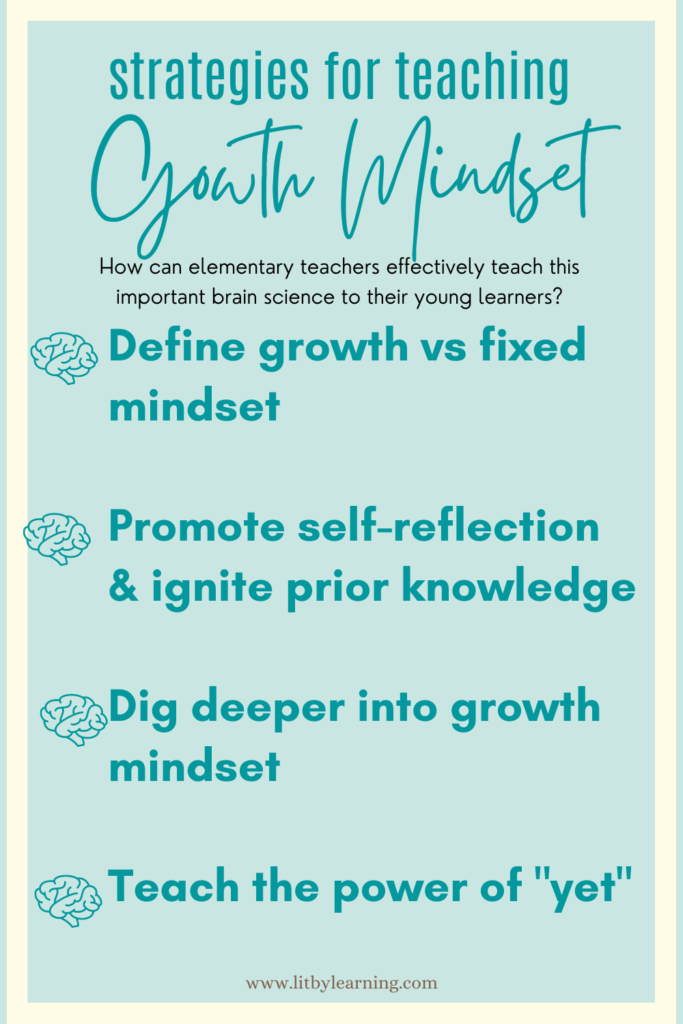
Shaping your classroom environment
Celebrate Effort and Process
Shift the focus from solely praising intelligence or talent to celebrating effort and the process of learning. Highlight specific instances where students have exhibited perseverance, creative problem-solving, or effective strategies. Encourage them to share their challenges, setbacks, and triumphs to foster a classroom culture that values growth and resilience.
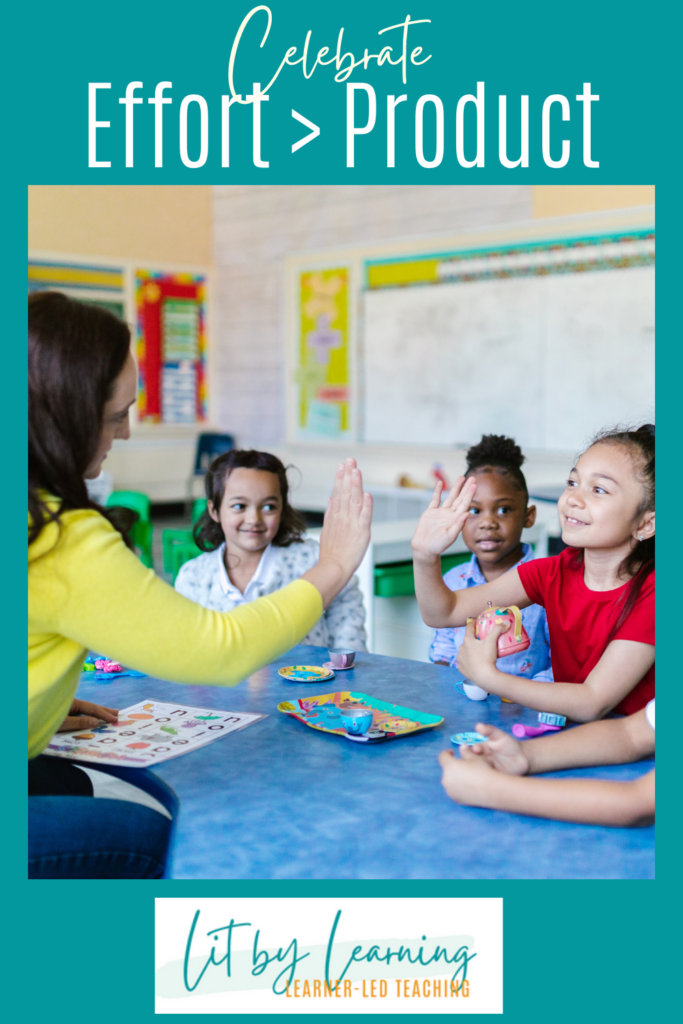
Model and Encourage Positive Self-Talk
Model positive self-talk by using phrases like “I can try a different approach,” “Mistakes help me learn,” or “I believe in my ability to improve.” Consider posting mantras or affirmations in the classroom for students’ reference. Encourage students to use similar language when facing challenges or setbacks. Remind them that their inner dialogue shapes their mindset and that choosing positive and growth-oriented thoughts can make a significant difference in their learning.

Embrace Challenges and Failure
Create a safe and supportive environment where students feel comfortable taking risks and embracing challenges. Encourage them to step out of their comfort zones, try new strategies, and learn from failures. Frame failures as opportunities for growth and highlight examples of famous individuals who faced setbacks but persisted to achieve success.
Provide Growth-Focused Feedback
When providing feedback on student work, focus on the effort, progress, and specific strategies they employed rather than solely on the final outcome. Encourage students to reflect on their growth and improvements. Use language that reinforces the idea that abilities can be developed and that learning is an ongoing process.
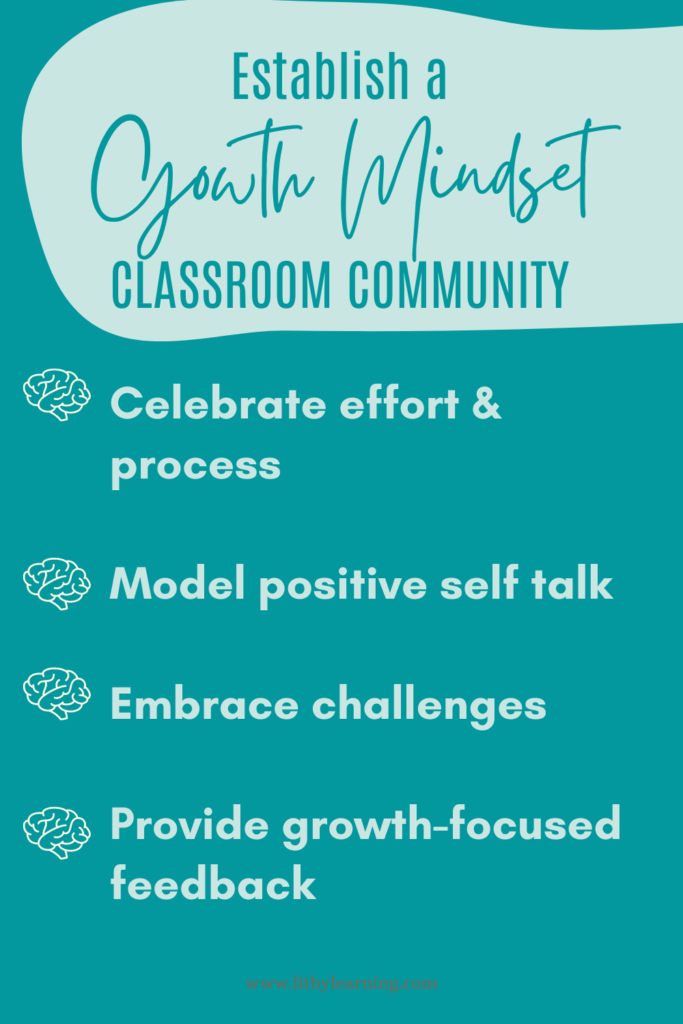
Celebrate your students’ growth mindsets!
By teaching the difference between a growth mindset and a fixed mindset, we empower our elementary students to view challenges as opportunities, believe in their ability to grow and learn, and persevere through setbacks. By fostering a growth mindset in the classroom, we lay the foundation for a lifelong love of learning and the resilience needed to navigate the complexities of the world. As educators, we have the power to shape the minds of our students, and by cultivating a growth mindset, we can help unlock their full potential.

Read more!
Check out these other posts!
- 5 Growth Mindset Mantras for Students & Teachers alike! How will these growth mindset affirmations inspire you and your students?
- 4 Easy Steps to Co-creating Classroom Expectations with your Students! Use these 4 simple steps to set the foundation for a student-centered school year!
- How Unpacking Standards Enables my Cross-Curriculuar Teaching! Read here to find out how deconstructed standards power my cross-curricular curriculum creation.

